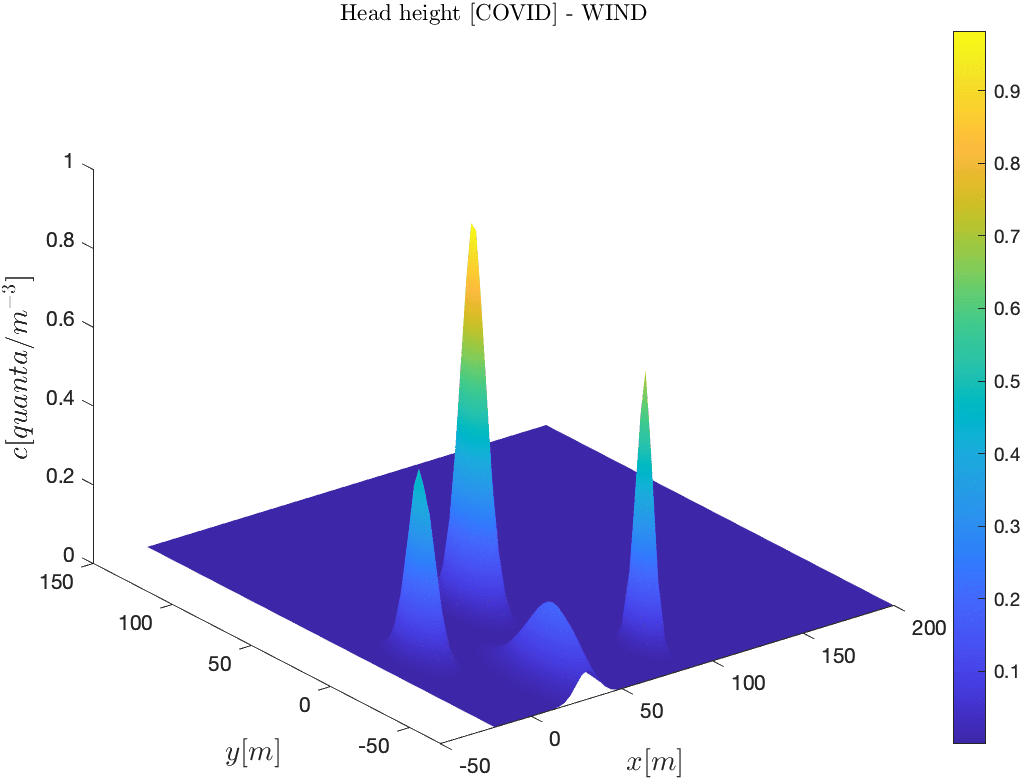To reduce the spread of COVID-19 by airborne (aerosol) transmission of SARS-CoV-2, it is necessary to identify the governing transport processes and parameters of air pollution. The aim is to produce a theoretical model and predict spacial virus concentrations, as well as the growth rate of a contaminated region.
Given the approximate quanta emission rates of SARS-CoV-2, the viewing platforms and the stage are designed to accomodate a certain number of people. The rates are different for people breathing at rest, breathing during heavy activity, speaking during light activity and speaking loudly/singing.
In the following simulation, 5 infected concert-goers are considered as distinct
sources fixed in
space. Using the analytical solution for advection-diffusion of a Gaussian plume, and at increasing
times, two scenarios are considered: NO WIND and WIND. The standard advection-diffusion-reaction
model deals with
the time evolution of the virus in air. The mathematical equations describing this evolution are
partial
differential equations derived from mass balances. The overall change in concentration is described
by the 2-D
advection-diffusion equation:
\[ \frac{\partial}{\partial t} \left\langle\bar{C}(x,y,t) \right\rangle+\frac{\partial}{\partial x}
\left(u(x,y)\left\langle\bar{C}(x,y,t) \right\rangle\right) + \frac{\partial}{\partial
y}\left(v(x,y)\left\langle\bar{C}(x,y,t) \right\rangle \right)
=
\frac{\partial}{\partial x} \left(D_x \frac{\partial}{\partial x}\left\langle\bar{C}(x,y,t)
\right\rangle\right) + \frac{\partial}{\partial y} \left(D_y \frac{\partial}{\partial
y}\left\langle\bar{C}(x,y,t) \right\rangle\right)
\]
\[x, y \in \mathbb{R} , t\geq0\]
The solution for the continuous release of COVID in two dimensions is given by: \[ C(x,y,t)= \frac{\dot{M}}{2\,\sqrt{{\pi}^2\,\sigma^2_x\,\sigma^2_y}}{e}^{-\frac{{\left(X-U_x\,t\right)}^2}{2\,\sigma^2_x}-\frac{{\left(Y-U_y\,t\right)}^2}{2\,\sigma^2_y}} \]

